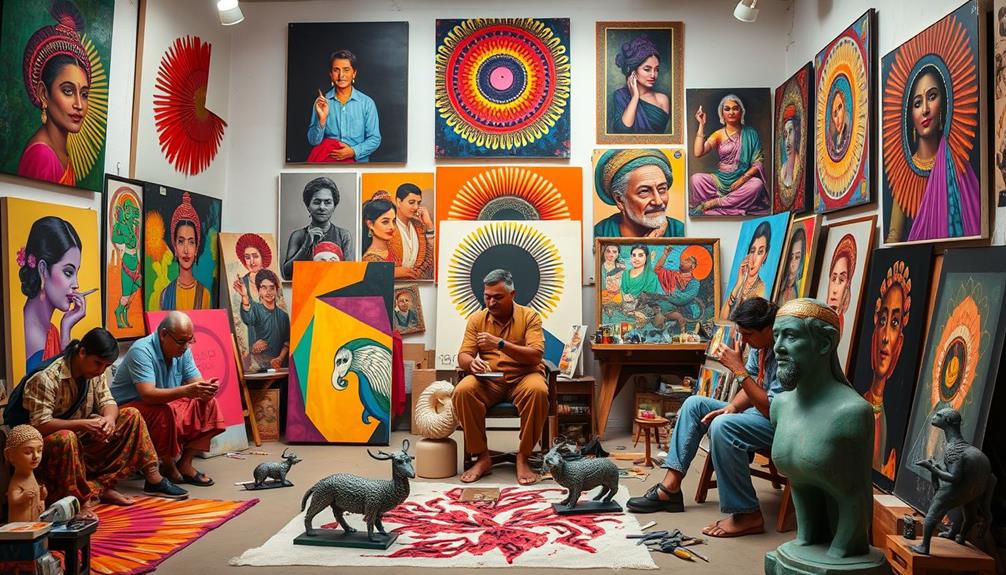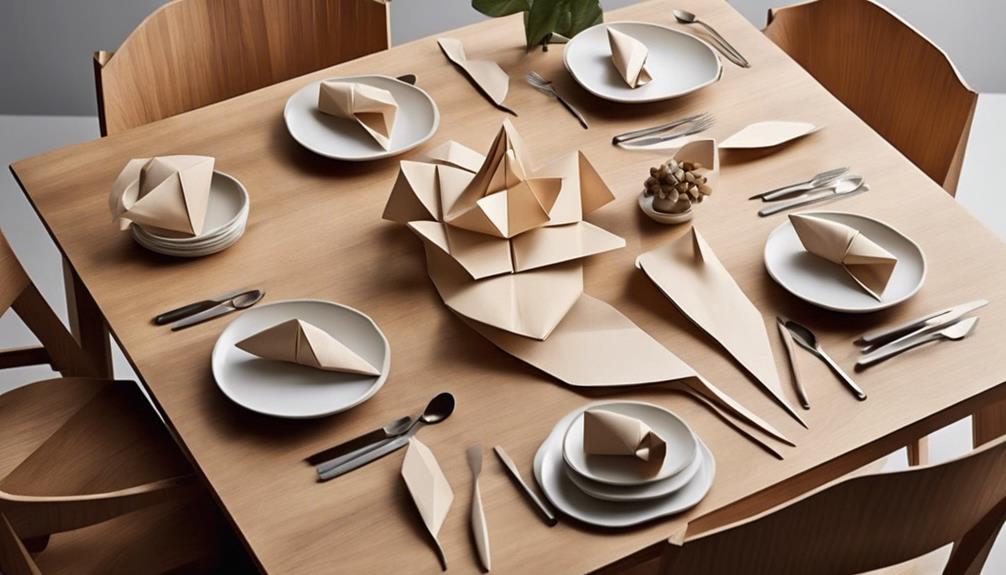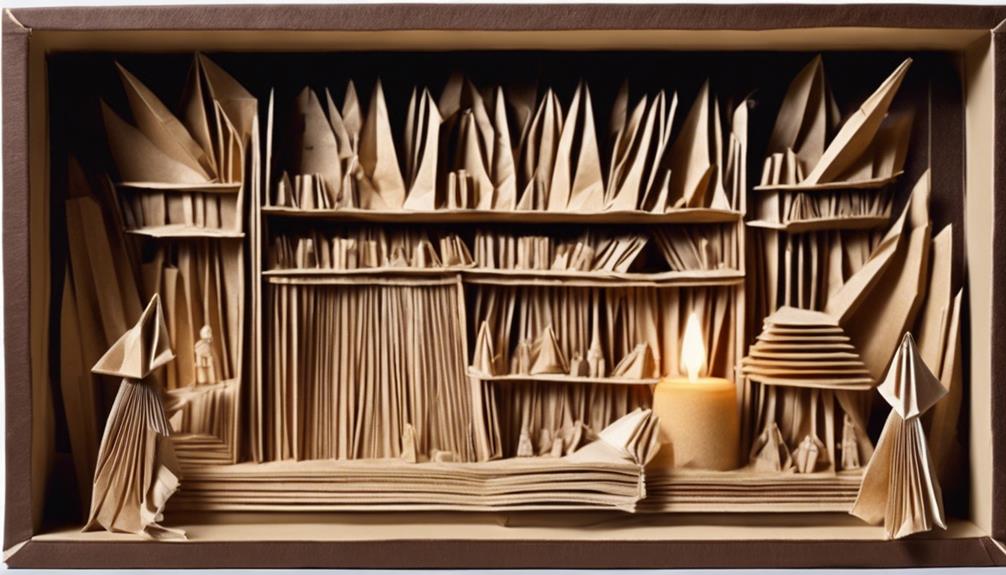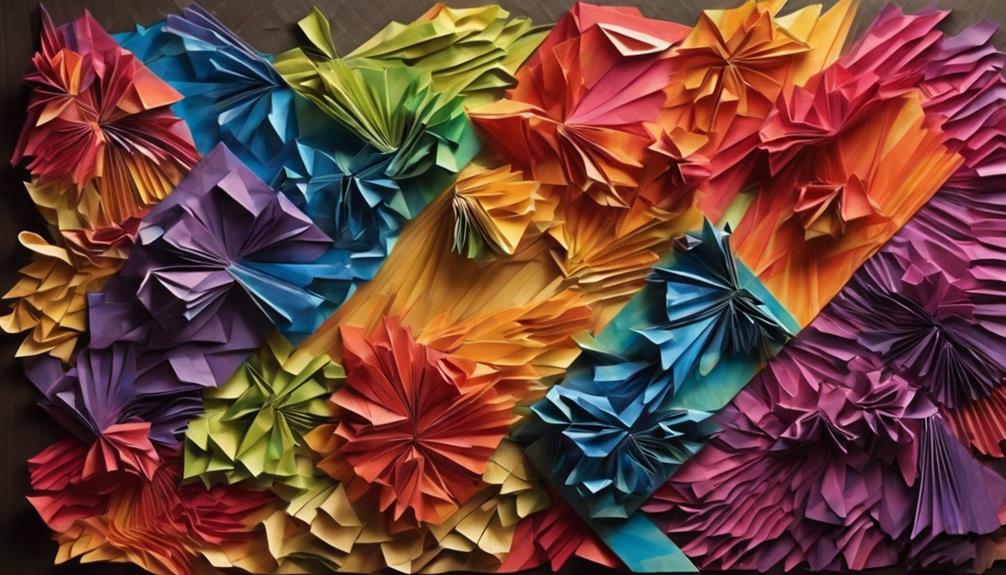Kolkata's art scene has evolved dramatically from the colonial era to today. You'll find that the Bengal School of Art emerged in the late 19th century, emphasizing indigenous themes against colonial influences. The establishment of the Government College of Art and Craft in 1907 formalized art education, paving the way for artists like Abanindranath Tagore and Nandalal Bose. In the 1990s, an explosion of art galleries flourished, making art accessible to the middle class. Today, contemporary artworks reflect this rich history while embracing modern techniques. The changing landscape offers exciting insights into what's next for Kolkata's artistic future.
Key Takeaways
- The British colonial era fostered art practices like Company Painting, influencing the naturalistic representation of Indian life.
- The establishment of the Government College of Art and Craft in 1907 formalized art education and nurtured notable artists.
- The Bengal School of Art emerged in the late 19th century, promoting indigenous themes as a reaction against colonialism.
- The 1990s saw a proliferation of art galleries, enhancing public engagement and showcasing a diverse range of artworks.
- Contemporary art in Kolkata reflects historical roots while embracing sustainable practices and fostering local narratives for future growth.
Historical Context of Art in Kolkata
Kolkata's art scene has undergone remarkable transformations, especially since the British colonial era. During this time, the city became a melting pot of cultural influences, shaped by British, Dutch, French, and Portuguese settlers. The establishment of the Government College of Art and Craft in 1907 marked a significant shift, formalizing art education and nurturing local talent.
This period also saw the integration of various artistic techniques, much like the multifunctional furniture that maximizes utility in small spaces, highlighting the importance of adaptability in art.
In response to colonial dominance, the Bengal School of Art emerged in the late 19th century, championed by figures like Abanindranath Tagore and Nandalal Bose. They emphasized traditional art forms, drawing on indigenous themes and techniques as a means of cultural expression.
Their work not only preserved an artistic legacy but also inspired a sense of national pride during the Swadeshi movement.
As you explore Kolkata's artistic journey, you'll notice how these historical roots paved the way for contemporary art. Today, the city thrives as a hub for artistic innovation, with galleries and exhibitions showcasing a blend of traditional and modern expressions.
This vibrant scene reflects the rich tapestry of influences that have shaped Kolkata's art, illustrating its ongoing evolution and relevance in the contemporary world.
Colonial Influences on Artistic Practices
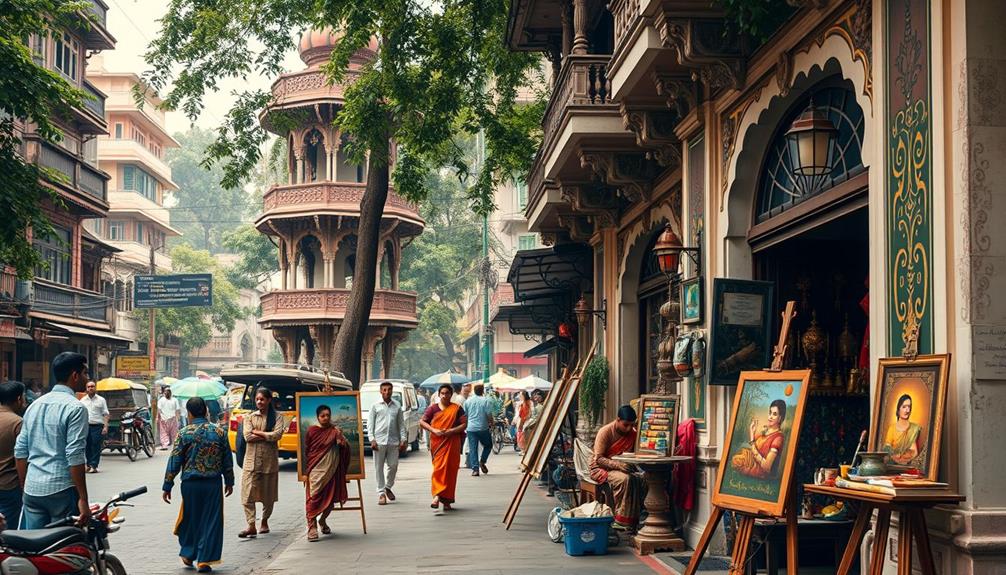
Exploring colonial influences on artistic practices reveals a complex interplay between tradition and Western styles in Kolkata. The colonial era birthed unique art forms that shaped the city's cultural landscape. For instance, Company Painting emerged as a naturalistic watercolor technique, commissioned by British officials to depict Indian landscapes and daily life.
| Art Form | Features | Key Figures |
|---|---|---|
| Company Painting | Naturalistic, watercolor, everyday life | British officials |
| Indo-Saracenic | Blends Indian Islamic and Victorian styles | Victoria Memorial |
| Bengal School of Art | Indigenous themes, nationalistic focus | Abanindranath Tagore, Nandalal Bose |
| Traditional Indian Art | Revival of Mughal and Rajasthani styles | Various regional artists |
The Bengal School of Art, founded in the late 19th century, reacted against colonial influences by promoting traditional Indian art, helping to forge a distinct artistic identity. Artists like Abanindranath Tagore and Nandalal Bose played pivotal roles in this revival. Additionally, the establishment of art institutions, such as the Government College of Art and Craft, laid the groundwork for future generations in West Bengal, ensuring the continuation of this rich artistic heritage.
Growth of Art Galleries

The evolution of art galleries in Kolkata during the 1990s marked a transformative period in the city's cultural scene. You'd notice a significant rise in the number of art galleries, with notable establishments like CIMA, Genesis Art Gallery, and Experimenter enhancing the cultural landscape.
This growth coincided with an increase in private art collections, which led to more public exhibitions, making art accessible to a broader audience. The use of technology in art presentation also began to emerge, with galleries exploring AI-generated music and its intersection with visual arts, enriching the audience's experience.
These art galleries began showcasing affordable artworks, inviting middle-class buyers to see art as a worthwhile investment rather than an elitist pursuit. Annual art fairs, such as those in Santiniketan, featured diverse collections at low prices, promoting community engagement and attracting wider audiences to the art scene.
Moreover, contemporary art galleries in Kolkata actively support both emerging and established artists, creating holistic spaces for artistic exploration. This environment encourages dialogue and engagement among artists and the community, allowing local narratives to flourish.
As you explore the vibrant art galleries, you'll witness a dynamic blend of creativity and cultural expression that continues to shape Kolkata's evolving artistic identity.
Contemporary Art Scene
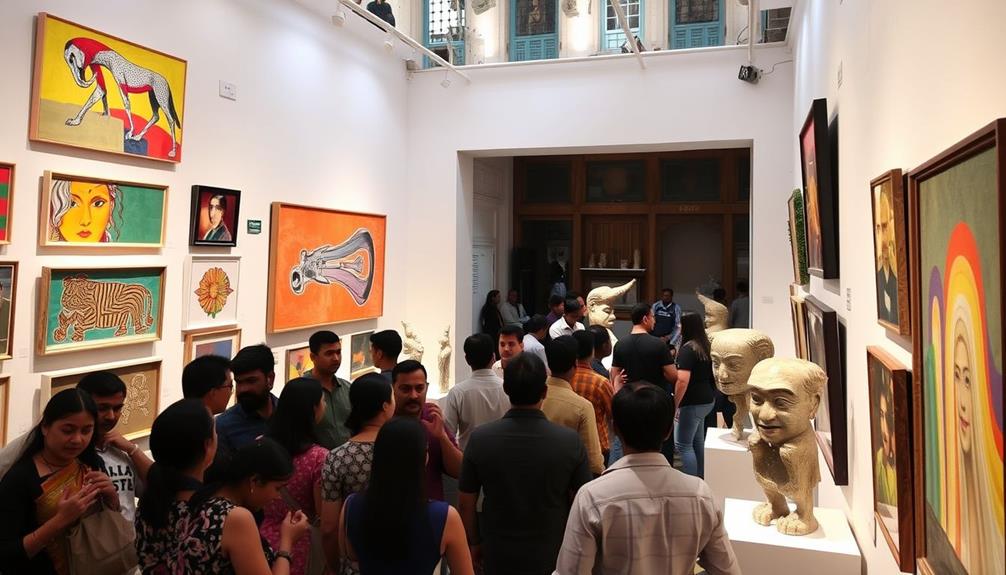
Since the 1990s, Kolkata's contemporary art scene has blossomed, showcasing a vibrant mix of creativity that captivates both locals and visitors. With art galleries like CIMA and Experimenter leading the charge, you'll find a platform that promotes both established and emerging artists.
The annual art fairs, particularly those in Santiniketan, offer a diverse range of artworks at accessible price points, enhancing community engagement and encouraging participation in the arts. Additionally, the integration of aromatherapy techniques within art spaces has sparked new forms of artistic expression that deepen the viewer's experience and emotional connection to the artwork.
Local artists increasingly showcase their works, reflecting a rising demand in both local and international markets. These contemporary art initiatives prioritize inclusivity and accessibility, creating events that invite dialogue around artistic expression.
The establishment of the Kolkata Museum of Modern Art (KMOMA) plays a key role in elevating the city's status within the global art scene, signaling a commitment to nurturing and showcasing artistic talent.
As you explore this dynamic environment, you'll witness how the blend of innovation and tradition fuels Kolkata's contemporary art landscape, making it an exciting time for both artists and art lovers alike.
Future of Art in Kolkata
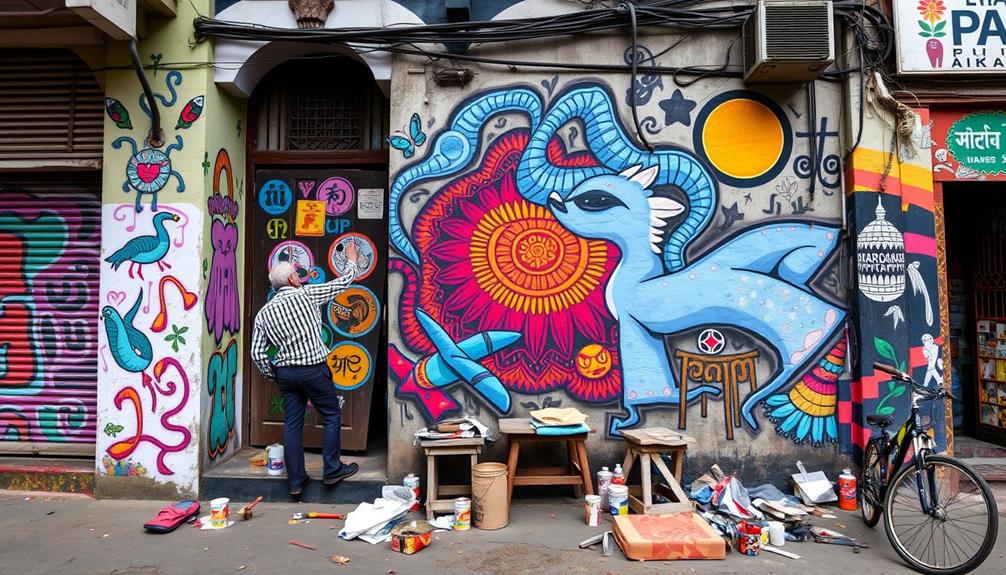
As Kolkata's art scene continues to evolve, it's clear that the future holds exciting opportunities for both artists and audiences. The establishment of the Kolkata Museum of Modern Art (KMOMA) is a significant step, enhancing the city's global presence by showcasing contemporary works and fostering collaboration between government and private sectors.
Additionally, the movement towards sustainable practices in various industries, including art, is gaining momentum, reflecting a broader shift in societal values towards eco-consciousness, similar to trends in energy-efficient living.
You'll notice an increasing public interest in visual arts, reflected in the rise of attendance at art galleries and fairs. This enthusiasm indicates a bright future for Kolkata's artistic community.
Art galleries are expected to diversify their offerings, promoting local narratives and identities while engaging with the community more effectively. The fusion of traditional craftsmanship with modern design is attracting global attention, positioning Kolkata as a hub for innovative artistic expression.
Supporting emerging artists through exhibitions and workshops is crucial for sustaining the growth and relevance of the art scene in the coming years. As you engage with this vibrant landscape, you'll find that the blend of historical influences and contemporary trends creates a dynamic environment ripe for creativity and collaboration.
The future of art in Kolkata promises to be a rich tapestry of ideas and inspirations.
Frequently Asked Questions
What Is the Traditional Art Form of Kolkata?
Kolkata's traditional art forms dance through vibrant colors and intricate details. You'll discover Kalighat paintings, Patachitra, and terracotta crafts, each telling tales of culture, devotion, and craftsmanship that resonate with the city's rich heritage.
How Does the History of Colonialism Impact the Art of India?
Colonialism's history shapes India's art by blending traditional and Western styles. You'll see artists maneuvering this tension, creating works that reflect both indigenous heritage and colonial influences, which ultimately redefine the nation's artistic identity.
What Is the Colonial Period of Kolkata?
The colonial period in Kolkata, starting in the late 17th century, transformed the city into a British stronghold. You'd see a blend of architectural styles, creating iconic landmarks that reflect this cultural fusion.
How Did the Bengal School of Art Change Colonial India's Art Landscape?
Imagine a bridge made of vibrant colors and traditional themes; that's what the Bengal School did for colonial India's art landscape. You see, it revived indigenous techniques, forging a unique identity amidst foreign influences.
Conclusion
As you explore the evolution of art in Kolkata, you'll see how colonial influences shaped its vibrant landscape. The growth of galleries and the contemporary scene reflect a dynamic conversation between tradition and innovation. It's fascinating to think that the city's artistic future might blend these rich histories with emerging voices. If you dive deeper, you might uncover a hidden truth: Kolkata's art isn't just a reflection of its past, but a bold statement about its future.

